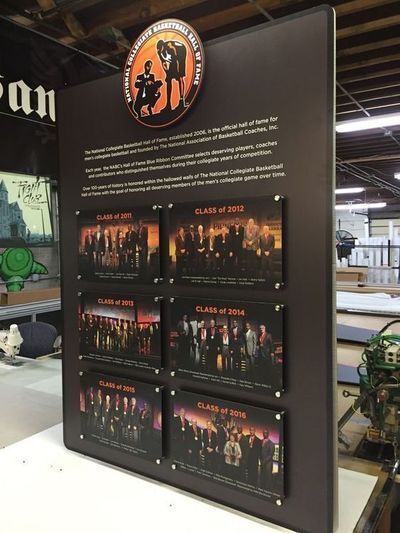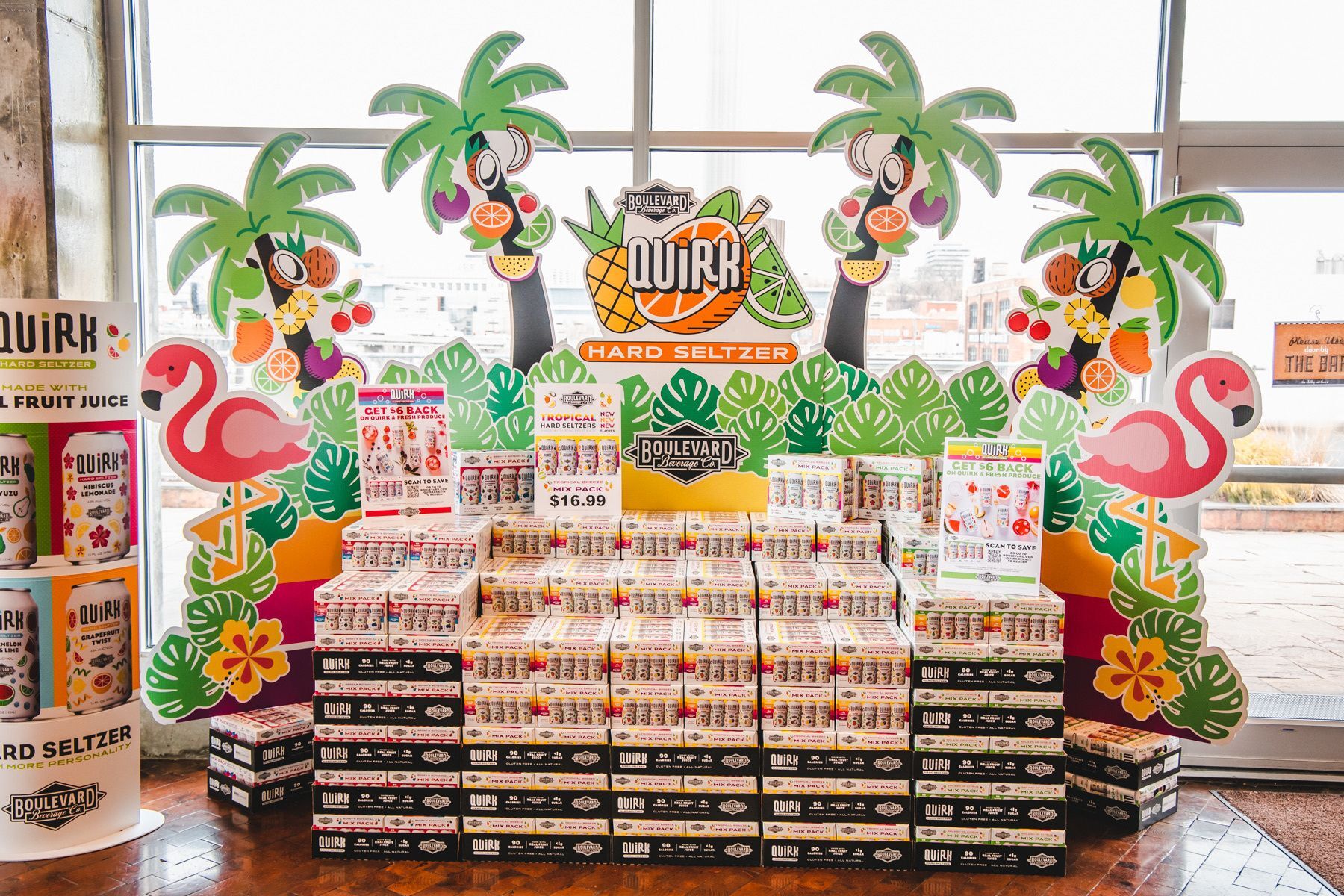How Big Can We Print?
When it comes to large-format printing, one of the first questions customers ask is: “How big can you print?”
It sounds like a simple question, but the truth is — the answer depends on three things: the equipment, the material, and the installation method. As a professional reseller, I’ve learned that the real value we provide isn’t just printing large graphics — it’s engineering them to look flawless once they’re installed, no matter how big the vision gets.
Understanding Print Widths and Material Limits
Large-format printers fall into two main categories: roll-fed and flatbed. Each has its own size limitations.
Roll-Fed Printers
These are designed for flexible materials like banner vinyl, adhesive vinyl, fabric, or mesh.
- Standard width: 54” or 60”
- High-capacity industrial models: up to 126” (10.5 feet) wide

The client wanted a multi-dimensional layered look for this stand-alone museum display.
Anything wider than that is typically produced in multiple panels that are tiled together.
Flatbed Printers
Used for rigid materials such as acrylic, foamboard, aluminum, PVC, or wood.
- Standard bed size: 4’ x 8’
- Extended options: 5’ x 10’, 6’ x 10’, or larger with rollover systems
Because flatbeds print directly onto rigid sheets, size is limited by both the bed dimensions and the physical handling capabilities — weight, rigidity, and shipping practicality.
Our equipment accomodates a maximum width of 100" for rigid substrates and 126" for roll fed media.
Tiling: Printing Big Graphics in Perfectly Aligned Panels
When your client wants a wall mural, building wrap, or trade show backdrop larger than the press can handle in one piece, we print the image in tiles — overlapping panels that are assembled on-site.
In the digital print world, this is called tiling or panelization, and when done right, it’s invisible.
Key Principles for Seamless Tiling:
- Bleed and overlap: Usually ½" to 1" per seam ensures alignment flexibility.
- Consistent scaling: All panels must be exported from the same art file without compression.
- Numbering and layout maps: Each panel is labeled for precise installation sequencing.
- Surface consistency: Especially critical when combining panels across windows, corners, or uneven walls.
As resellers, our role is to help clients understand that “printable size” and “finished display size” aren’t the same thing — because with good tiling, a 200-foot mural is just a collection of perfectly engineered 60-inch panels.
The Shipping and Handling Factor
Even if we can print something enormous, the bigger question is: can it be transported and installed safely?
That’s where resellers differentiate themselves from online print providers — by knowing when to break a project down intelligently.
For example:
- A single 10-foot acrylic sheet might be possible to print — but impossible to ship economically.
- Instead, producing three 33" panels creates the same visual impact with easier handling, safer transport, and lower risk of cracking or flex damage.
Clients often appreciate when we explain this early — it positions us as strategic partners, not order-takers.
Creative Techniques for Oversized Installations
When scale exceeds the limits of machinery or material, the pros get creative.
- Panel mosaics: Graphics printed in sections and joined with hidden seams.
- Edge finishing: Overlaps, vinyl welds, or butt seams with laminate protection.
- Backlit transitions: Breaks hidden by lighting fixtures or architectural features.
- Fabric tension systems: Multiple graphics stretched in sequence to appear continuous.
What the viewer sees is a single immersive display — not dozens of individual prints.
How to Set Expectations with Clients
One of the best traits of a successful reseller is transparency about technical limits.
Clients love “yes,” but they respect “yes, if we do it right.”
Here’s how we frame it:
“The maximum size we can print in one piece is X, but we can produce your full-size display seamlessly using multiple panels that align edge-to-edge. You’ll never notice the joins.”
That conversation builds trust and sets up a realistic production plan.
The Future of Scale: Modular Printing Systems
Technology keeps expanding what’s possible. Some next-generation printers (like the EFI Pro 30h or HP Latex 2700) already exceed 10 feet wide with continuous roll systems.
Meanwhile, automated tiling software and AI-based color consistency make massive murals easier to manage than ever before.
We’re approaching an era where “How big can you print?” won’t be about machine width — it’ll be about how creatively you can design and install.

Color-whiite-color on clear PETG set in backlit bar display makes for eye-popping messaging at fund raising event.
Final Thoughts
As a professional large-format reseller, I’ve learned that size isn’t the limitation — strategy is. When you combine the right equipment, materials, and installation plan, there’s virtually no limit to what we can produce: wall-to-wall graphics, ceiling drops, custom exhibits, floor murals, even full-building wraps.
What clients really want isn’t just a “big print.” They want a flawless brand experience that looks monumental, feels cohesive, and installs without a hitch. That’s what separates the print vendor from the true large-format partner — and that’s where great resellers build lasting value.
Final Thoughts
Color–white–color printing represents the pinnacle of professional acrylic and glass printing. It delivers optical clarity, color consistency, and a level of finish that immediately communicates craftsmanship.
For resellers, mastering this technique does two things:
1. It expands your product range into the premium signage and architectural space.
2. It positions you as a consultant who understands advanced print engineering, not just pricing.
Because when you can confidently explain how light, color, and layering work together — you stop competing on cost and start competing on expertise.
That’s what transforms a print vendor into a print partner.
